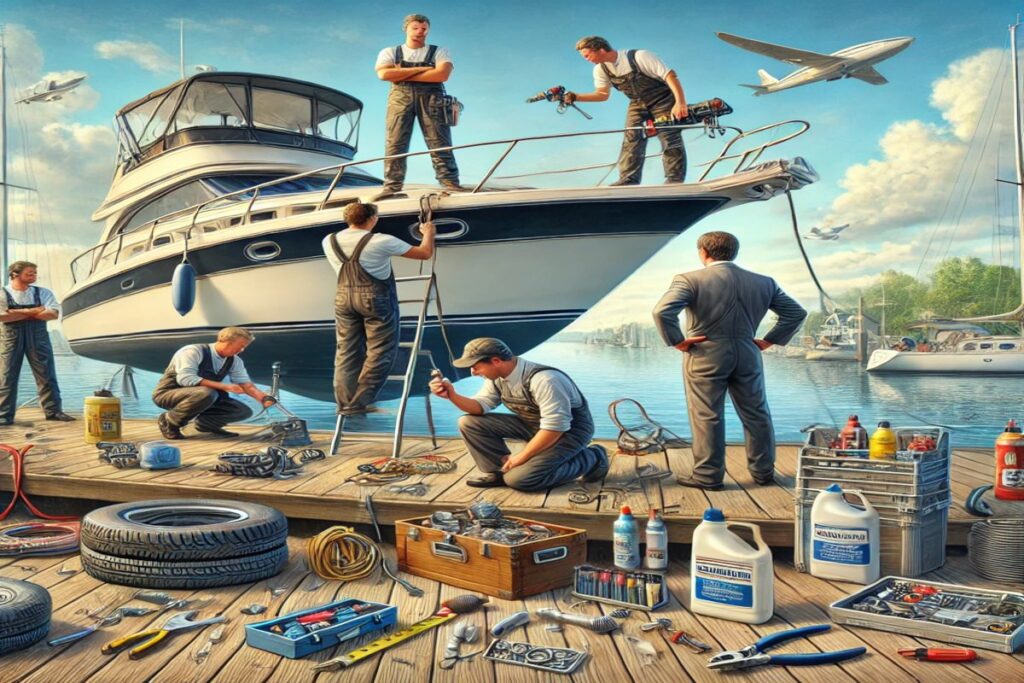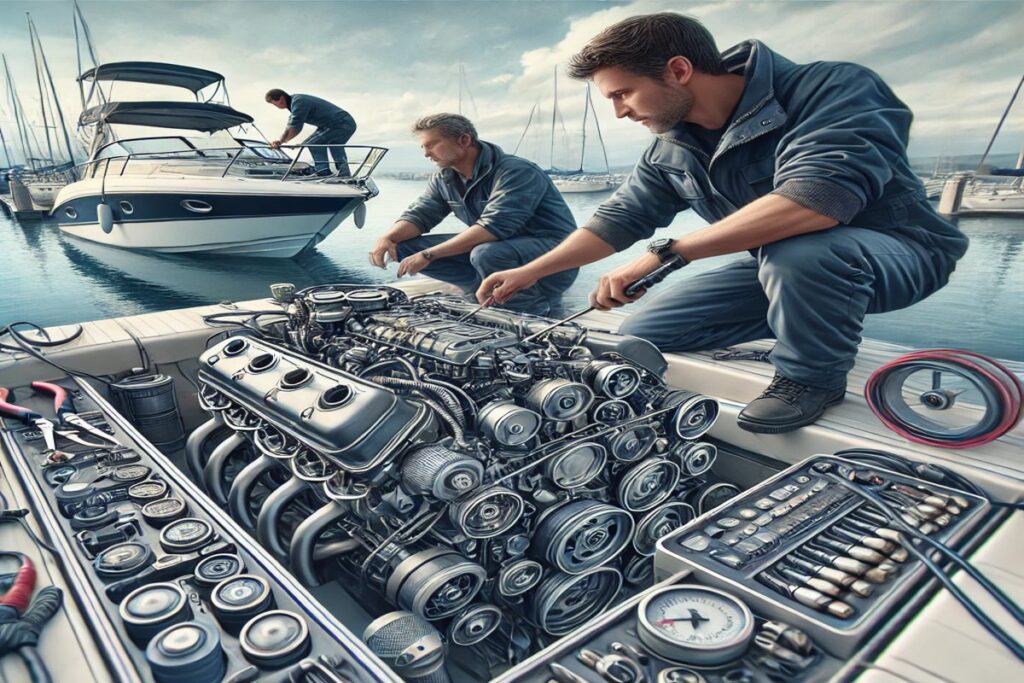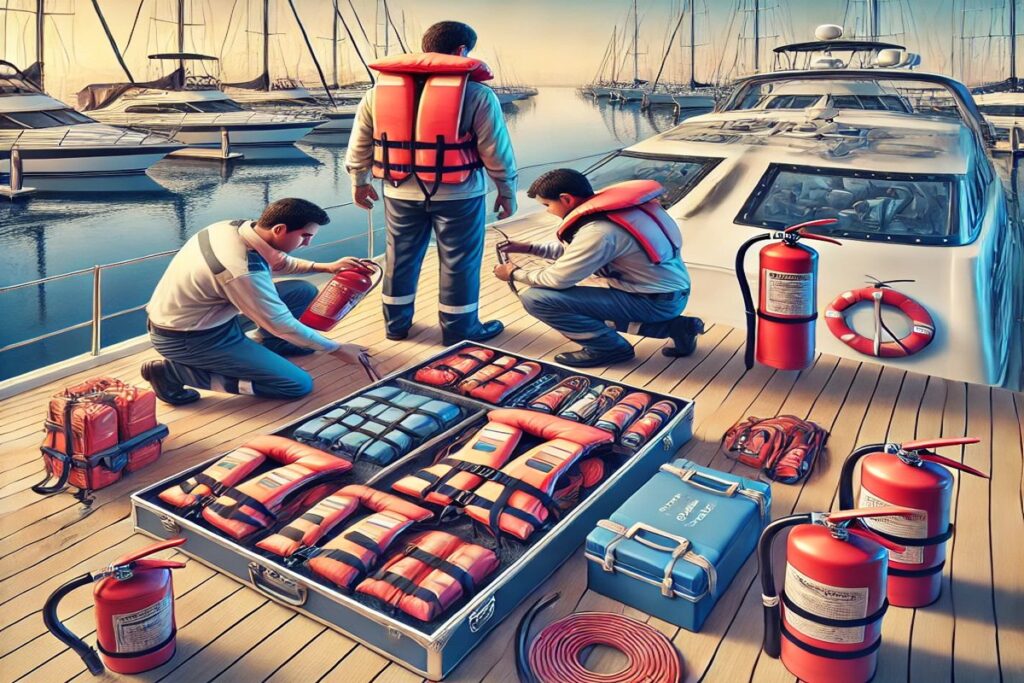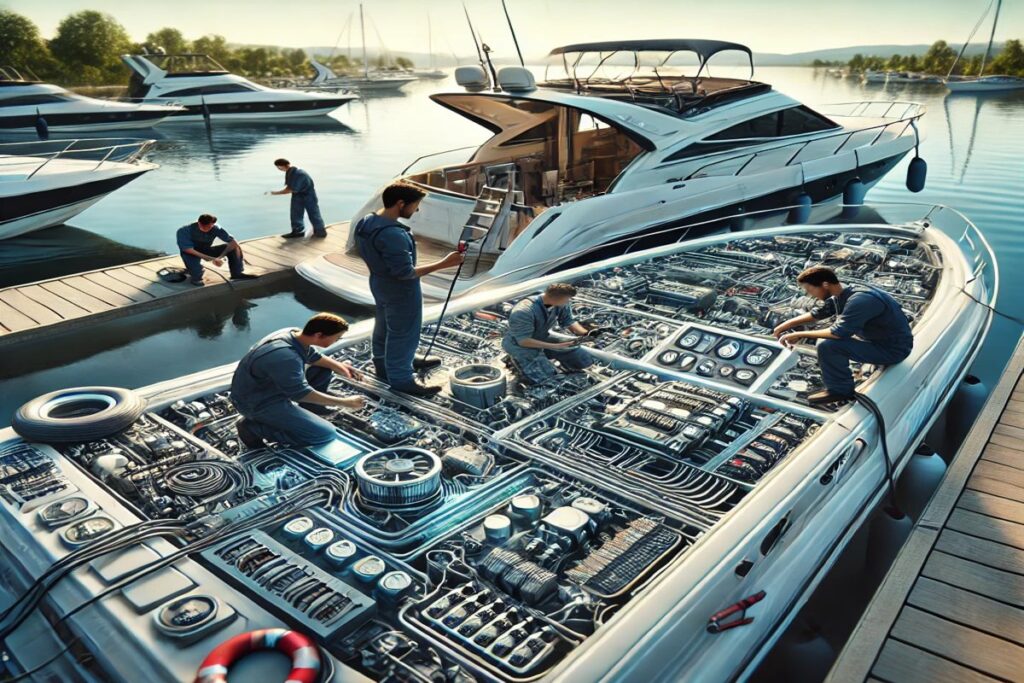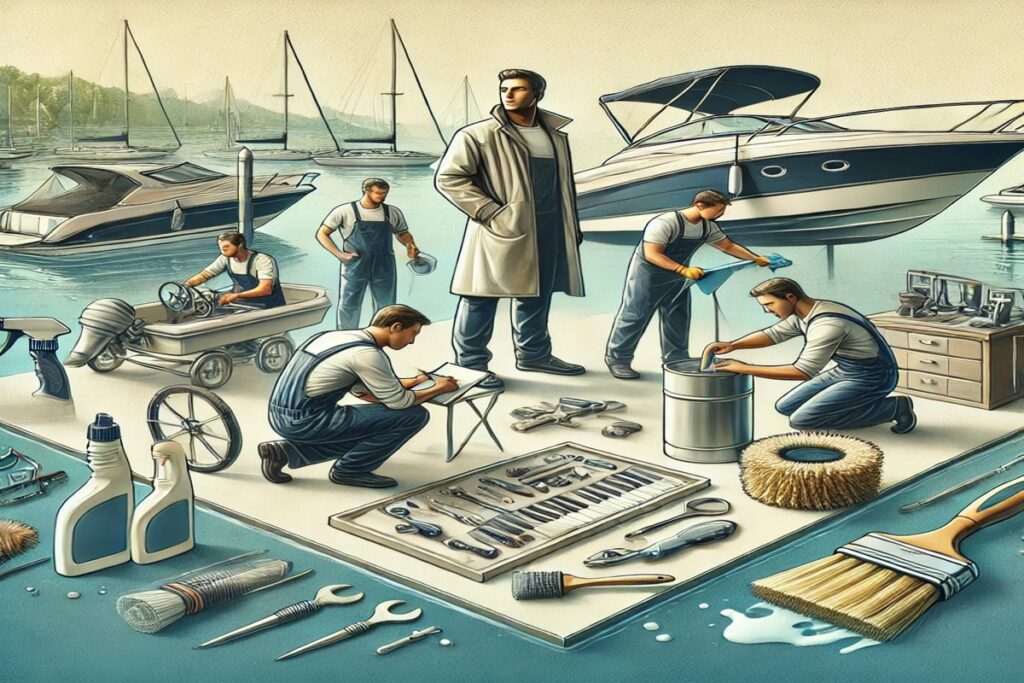Seasonal Preparation and Boat Repair
As winter comes to an end, boat owners begin to look forward to the warm days of sailing ahead. Whether you own a small boat or a luxury yacht, it’s important to prepare it properly for the upcoming season. After months of sitting idle in the dock or in storage, your boat will need some attention before sailing. With boat cleaning and boat repair, preparing your vessel will ensure a safe jorney.
In this article, we’ll discuss the essential steps for preparing your boat. Those steps include cleaning, maintenance and periodic inspection and testing. These tasks are key to ensuring that your boat is in excellent condition. And that you avoid unexpected issues once you’re out at sea.
The Importance of Pre-Season Preparation
Before mention boat repair and cleaning, it’s important to understand why pre-season preparation is so critical. Boats face many challenges during the winter months, especially if they’re in colder regions. Low temperatures, moisture, and inactivity can lead to issues with the engine, hull, and various systems.
By taking the time to carefully prepare your boat for the season, you can:
- Extend its lifespan
- Prevent major repairs down the line
- Ensure safety for you and your passengers
- Enhance overall performance
With these benefits in mind, let’s explore the process of getting your boat ready for the water.
Initial Boat Inspection
Before performing any boat cleaning or repairs, start with a thorough inspection. Look over the entire boat, both inside and out, for any visible signs of damage or wear. Check for cracks, leaks, or other structural problems that may have developed over the winter. Pay special attention to the hull, as it may have some damage from the harsh weather.
The engine is another critical area to inspect. You need to check the oil levels, belts, hoses and filters of the boat. While on checking the boat if anything looks worn or out of place, you need to know that it is the time for boat repair. Regular maintenance, including oil changes and part replacements, can prevent costly breakdowns later in the season.
Engine Maintenance and Testing
The engine is the heart of your boat, and after sitting idle for a few months, it will need attention. To avoid any mechanical failures, perform periodic inspection and testing of the engine before heading out on the water. Start by:
- Checking fluid levels: Make sure the oil, coolant, and fuel levels are adequate. If you didn’t change the oil before winter storage, the time before the season is a good time to do so.
- Examining the battery: Batteries can lose charge during the winter. Sso test the voltage and ensure that the battery is full. Clean any corrosion off the terminals and inspect for any cracks or leaks.
- Inspecting hoses and belts: Look for any signs of wear, such as cracking or fraying, and replace any damaged parts.
- Testing the ignition and starter system: Start the engine and let it run for a few minutes. By that you can ensure everything is functioning smoothly.
Addressing these basic engine tasks will help prevent more serious boat repair needs later on. Always follow the manufacturer’s guidelines for your specific boat model.
Cleaning the Boat
Once the basic inspection and engine checks are complete, it’s time for a thorough boat cleaning. Not only does this improve the appearance of your boat, but it also helps you identify potential problem areas. Those problems may be corrosion, mildew or leaks. Here’s a step-by-step guide for effective boat cleaning:
- Exterior cleaning: Begin with the hull and deck. Use a mild detergent and a soft brush to clean away dirt, salt, and grime that may have accumulated over the winter. For boats stored in saltwater, it’s especially important to remove any salt deposits that can cause corrosion.
- Teak and wood surfaces: If your boat has teak or other wooden surfaces, take time to clean and protect them. Use a teak cleaner to remove any stains or discoloration, followed by a teak oil or sealant to protect the wood from the elements.
- Interior cleaning: You must not forget the interior part of the boat while cleaning. Clean all surfaces, seats and compartments of the boat carefully. Check for any mold or mildew, particularly in damp areas like the cabin or storage compartments. Use a marine-grade cleaner for upholstery and other fabrics.
- Windows and hatches: Clean the boat’s windows and hatches with a glass cleaner. Inspect the seals around the hatches to ensure they are watertight, replacing any damaged seals if necessary.
Regular boat cleaning helps keep your vessel in top condition. And makes it easier to spot any areas that might need repair or maintenance.
Inspecting Safety Equipment
Safety is always a priority so periodic inspection and testing of your safety equipment is a must. Before setting sail, make sure that all safety gear is in working order and compliant with regulations. Here’s a checklist of safety items to review:
- Life jackets: Ensure that there are enough life jackets for all passengers and that they are in good condition. Replace if they have any damage or worn.
- Fire extinguishers: Check that fire extinguishers are full and accessible. If their expiration date passed, then you need to replace them.
- Flares and signaling devices: Verify that flares and other signaling devices are up to date and functioning properly.
- First aid kit: Make sure your first aid kit is available with essentials like bandages, antiseptic and pain relievers.
- Bilge pumps: Test your bilge pumps to ensure they are operating correctly in case of water intrusion.
Having properly maintained safety equipment is crucial for a safe boating experience.
Electrical Systems Check
The electrical system is another area that requires attention after a long period of inactivity. Start by checking all electrical connections, including wiring, lights, and switches. Corrosion can occur over time, so clean and tighten any loose connections.
The second of all test all lights, including navigation lights, cabin lights and deck lights of the boat. Performing these electrical checks ensures that your boat is not only safe but also compliant with maritime regulations.
Hull Maintenance and Repair
The hull is one of the most important parts of your boat, and it takes a beating over time. Conduct a detailed inspection of the hull for any cracks, blisters, or areas where the gel coat may be peeling. If you find any damage, now is the time for boat repair before the season starts.
Depending on the extent of the damage, you may need to apply a new coat of paint or repair fiberglass. For more serious damage, consider consulting a professional boatyard for repairs. Addressing hull issues early on will prevent further damage and extend the life of your boat.
Periodic Inspection and Testing of Systems
Your boat has several systems that require regular periodic inspection and testing. These systems include the steering, plumbing, and fuel systems. Here’s how to perform these checks:
- Steering system: Test the steering system to ensure it is smooth and responsive. Check for any stiffness or play in the wheel, and inspect the cables or hydraulic lines for leaks or wear.
- Plumbing system: Inspect all hoses, pumps and tanks for leaks or blockages before set sail. Test the water system to make sure everything is functioning properly.
- Fuel system: Look for any cracks or wear in the fuel lines and replace them if necessary. Make sure the fuel tank is free from contaminants and debris.
Performing periodic inspection and testing of these systems helps prevent breakdowns and ensures your boat operates smoothly.
Boat Repair, Final Touches Before Launch
With your boat repair and cleaning complete, you’re almost ready to hit the water. Before launching, take a few final steps to ensure everything is in order:
- Lubrication: Apply lubricant to moving parts like winches, pulleys, and hinges to prevent rust and ensure smooth operation.
- Check the propeller: Inspect the propeller for any damage or debris that may have accumulated during storage. Remove any debris and ensure the propeller spins freely.
- Test the anchor: Make sure the anchor is securely fastened and that the chain or rope is in good condition.
Once these final checks are complete, your boat is ready for the water.
Boat Repair, Boat Cleaning anf For More: Contact Us
Preparing your boat for the season is an essential part of safe and enjoyable boating. From thorough boat cleaning to detailed boat repair, each step ensures your vessel is in top condition. Regular periodic inspection and testing of systems can help prevent costly issues and keep your boat running smoothly.
By following these preparation steps, you’ll be able to enjoy a stress-free and fun-filled boating season. Contact us for more about boat preparation and have a happy sailing!


